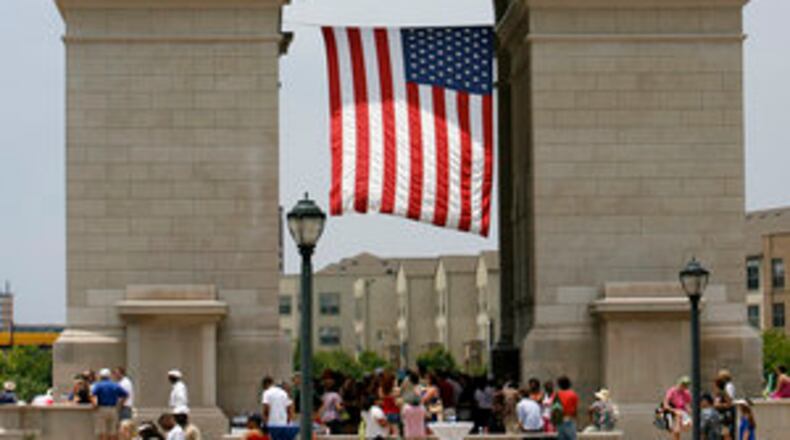While many of today’s generation are focused on a bloody war between Ukraine and Russia, it is important to remember another revolution in which brave freedom fighters rose up to seek independence from the former Soviet Union.
This Sunday marks the anniversary of the 1956 Hungarian Revolution – one in which people like myself and my family suffered under the brutality of communism in Hungary.
Thanks to efforts by the West, the Berlin Wall finally collapsed, and with it came the end of communism in Eastern Europe.
My memories of the Revolution and life under communism are painful. Yet they are essential to share because we will never learn to protect freedom and prosperity unless we stay connected to history. That’s why I am proud to be part of an important event this Sunday when the Hungarian American Coalition unveils the Hungarian Freedom Fighter monument at Millennium Gate Park in Midtown Atlanta.
Credit: contributed
Credit: contributed
The first of its kind statue of a woman Freedom Fighter will be a permanent reminder of thousands of unsung heroes who took up arms against communism and Soviet soldiers on Oct. 23, 1956.
With history often pushed aside, it is important to note that the Hungarian Revolution was a spontaneous uprising of students like myself – just 17-years-old at the time — joined by citizens and workers who risked their lives in Budapest and in towns across Hungary after years of atrocities.
The uprising brought as many as 200,000 people to the streets of Budapest alone and resulted in the deaths, including executions, of more than 2,600 Hungarians.
But we were willing to risk it all. Party leaders confiscated homes and property and forced people to join the communist party. We were denied jobs and entrance into school if we were affiliated with any church. We were unable to travel, speak freely and forced to learn Russian. Neighbors were encouraged to spy on neighbors to stay in good graces with the communists.
The secret police took people away in the middle of the night, often who never were heard from again. Our economy was decimated and there were few provisions.
I was among those who protested when the revolution broke out in my hometown of Tatabanya, a city northwest of Budapest.
We knocked down red stars and even occupied the police station in search of weapons to take on the Soviet soldiers across the country. Others fought David vs. Goliath street battles against Soviet tanks. The damage from villages to the capital in Budapest was extensive and can still be seen today.
At dawn on Nov. 4, 1956, the Soviet Union sent an overwhelming force of 150,000 troops and tanks across the Russian border into Hungary, defeating the uprising in a few days. Thousands died and 200,000 Hungarians fled to the West.
When the regime arrested protesters including our neighbor’s son, I left my home, bicycling to the Austrian border with two friends. It took almost two days to reach the border and we stayed in barns in small villages to avoid detection as we feared being arrested. We finally crossed the border on a pipe over a canal at dusk and I never felt so much sadness.
Fortunately, as a refugee I was mentored by a wonderful couple and earned an engineering degree. As an engineer I had the freedom and opportunity to work on several continents, finally moving to Atlanta where we have now lived for more than 40 years.
Many of us ‘56-ers returned to visit Central Europe after the fall of the Iron Curtain, but we who experienced communism are dismayed to see how it is again gaining a foothold across the globe, including in the West. We sympathize with our brothers in Ukraine trying to break free of Russian domination.
Every one of us of Hungarian descent who call this country home will tell you that the most important part of our heritage is remembering what happened those 13 days in 1956. The Freedom Fighter statue is a reminder that freedom is so precious.
We must never forget.
Lajos Macsotai, 83 of Dunwoody, was a Hungarian freedom fighter in October 1956 in the town of Tatabanya, northwest of the capital of Budapest, Hungary and will be at the dedication of the Freedom Fighter statue at Millennium Gate Park.
About the Author
Keep Reading
The Latest
Featured



